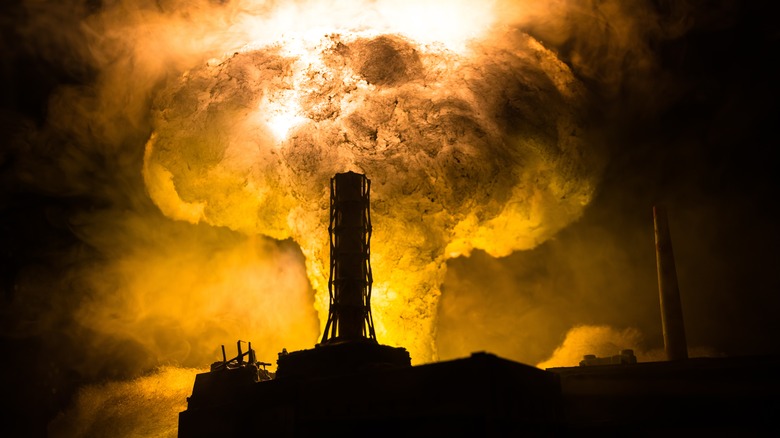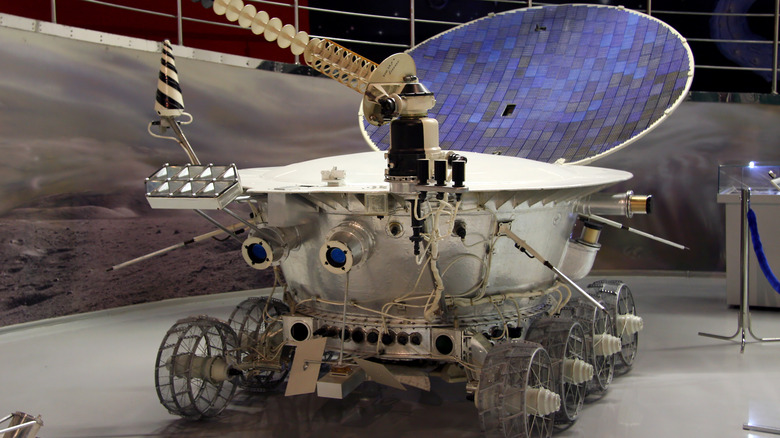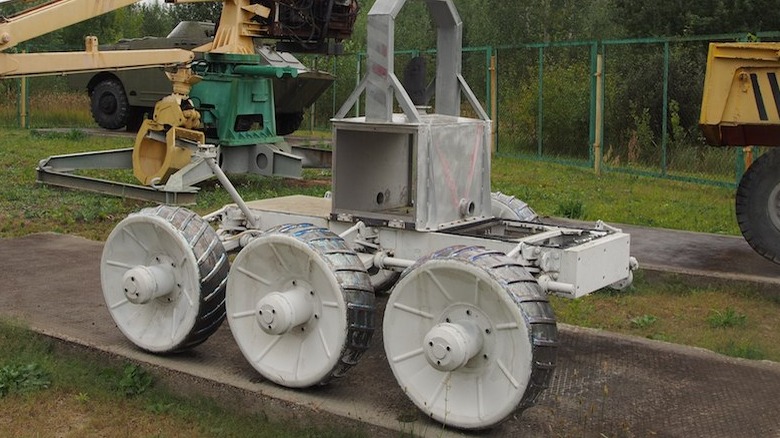How Russian Moon Rovers Helped Clean The Aftermath Of Chernobyl
The aftermath of the 1986 Chernobyl disaster, which happened in 1986, involved a lot of cleanup, much of which was done by people with the help of robots. Unfortunately, the majority of the robots used couldn't withstand the high levels of radiation in the area, leading to electronic failure. Luckily, Russian scientists had already invented two moon rovers prior to the Chernobyl disaster, according to Mashable. Because the moon lacks the atmosphere and magnetic field that Earth has, these moon rovers had to be designed with extra protection from solar radiation. (via the U.K.'s National Space Center).
Lunokhod 1, the first rover to successfully land on the moon on November 17th, 1970, had its electronics systems hardened to resist radiation, allowing it to function using a remote control for more than 11 months (via NASA). Scientists quickly realized the design of Lunokhod 1 could be used to aid workers in the cleanup of the Chernobyl plant, reducing the number of workers in the contaminated area, thus minimizing the harm to humans.
Designers of the Lunokhod Moon rovers were called in after Chernobyl
In the wake of the Chernobyl plant explosion, methods for safe clean-up had to be devised. The designers of the Lunokhod moon rovers were asked to adapt their original rovers to assist in cleaning efforts. The designers and their moon rovers were chosen specifically because of the devices' ability to withstand harmful radiation that may fry electronic components. It was thought that these rovers may fare better than other robots that had been used for clean-ups because of their hardened electronics.
The designers came up with and built two vehicles, called STR-1s, which were delivered to the Chernobyl diaster site upon completion in order to begin cleaning up the harmful debris. They were tasked with the job of clearing the roof of the facility, which was covered in radioactive graphite and nuclear fuel. (via the U.K.'s National Space Center).
Despite their ability to withstand radiation, the rovers gave out
Despite their extra protection, the STR-1 rovers eventually gave out due to the high levels of radiation present at the Chernobyl disaster site. Even though the rovers did not finish the job, they were still able to remove about 10% of the radioactive debris from the roof of the defunct nuclear plant before their systems shut off, according to the U.K.'s National Space Center.
While the rovers were not able to complete their job, they still managed to save many lives from the radiation through their efforts. Clearing off the roof without the use of the two rovers would have required many people in order to complete the job. However, after the rovers failed more than 3000 people were sent back into the toxic environment to continue the cleanup operation with each person only able to work in 90 second intervals.


